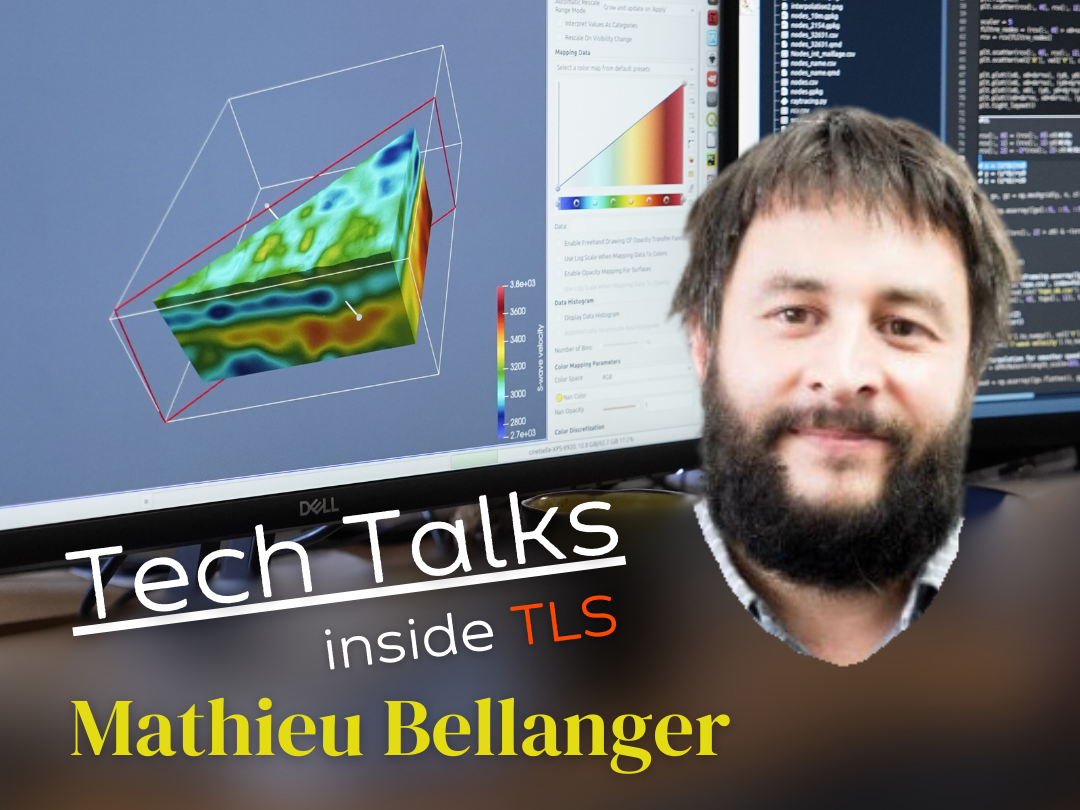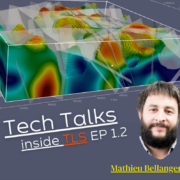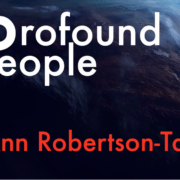“TLS Tech Talks” Podcast Ep. #1.1
Secrets of a Next-Gen Geothermal Exploration Company

Mathieu Bellanger – Head of R&D at TLS since 2014
Is there anywhere on Earth that hasn’t been touched by humans?
Tune in to “TLS Tech Talks” for behind-the-scenes access to our AI-enhanced exploration tool development. We dig thousands of feet below the surface of the Earth with big data geoscience.
Our first episode features a captivating conversation with our leading geoscientist, Mathieu Bellanger PhD sharing his journey and expertise in next-generation geothermal exploration.
From completing his PhD with a focus on field geology in the Western Alps to his pivotal role at TLS Geothermics, he shares the challenges and triumphs of securing geothermal licenses and beginning explorations.
By crafting advanced geophysical tools and innovative approaches like 3D imaging, Mathieu and his team aim to uncover hidden geothermal systems capable of sustaining long-term, economically viable, on-demand energy production. This conversation is not just about the technicalities of geothermal exploration but also about envisioning a future where clean energy is accessible and impactful.
Thank you for being with us as we explore tales of perseverance, innovation, and the pursuit of truly sustainable energy solutions.
If you enjoy this introduction, stay tuned for part 2 and 3 of this conversation.
For those who prefer to read, below you will find the complete transcript from our podcast:
Rusty: Hello and welcome to TLS Tech Talks Episode 1. This is Russ Muscarella and Im bringing you Mathieu Bellanger, he is Head of R&D at TLS and has been since 2014. Welcome Mathieu.
Mathieu: Hi, thanks for these meetings and the opportunity to discuss with you.
Rusty: Absolutely. Tell us a little bit about where you are and how you got there.
Mathieu: I’m in the southwest of France, close to Toulouse, living in the countryside because I enjoy being close to trees and nature. I work for TLS Geothermics, which is based in Toulouse. I’m an exploration geologist. Maybe I should start by talking about my journey before joining TLS.
Rusty: Sounds good.
Mathieu: Before my PhD, I studied geology at Orléans University, with a strong focus on field geology, geodynamics, and ore prospecting. Then, I completed my PhD at the same university, focusing on field geology in the Western Alps with a strong structural component. My research involved discussing processes during mountain building, extensive fieldwork, and laboratory measurements like chemistry and radiochronology to evaluate the timing of the deformation. After my PhD, I worked for a year as a teacher before becoming an exploration geologist in Geothermal energy. Interestingly, I hadn’t studied geothermal energy specifically before; I discovered it when I started working with TLS Geothermics.
Mathieu: In my first two years at TLS Geothermics, I wasn’t in Toulouse as we had no office. I worked from my home in the Western Alps, being the only employee at that time, starting in 2014. For more than three years, I was the sole employee, alongside the CEO of the company. During this time, our ambition was to obtain a geothermal license, which in France involves a slightly different process than in the US. In France, you must request an exploration license from the government to prioritize exploitation if you discover resources. You can conduct exploration without this license, but having it gives you priority over the resources in the targeted area.
Mathieu: At the start, we began our exploration quickly. I decided which area we would explore. Initially, we were looking for areas in France with potential geothermal resources. However, in 2014, there weren’t many in metropolitan France. One exception was a power plant in the Rhine Graben in the northeast of France, established several decades ago following oil and gas exploration that uncovered very hot areas. Initially, they intended to extract energy from dry rocks but discovered very hot rocks with significant fluid reserves, leading to the first power plant that utilized natural fluids within the fault zone, mostly below the basin.
Mathieu: At the start of my job at TLS Geothermics, everything was possible. We needed to build a workflow for our exploration, as our goal was to produce electrical power from geothermal energy in metropolitan areas. We focused on exploiting hydrothermal systems. Our intention was not to create overly complex systems or AGS, but rather hydrothermal systems, potentially with some enhancements or stimulation to connect the wells to the geothermal system, but with minimal intervention. We built our workflow to identify systems that could be extracted for economic value, aiming to be economically viable without external assistance. Initially, the feeding tariff for geothermal energy in France was favorable, allowing us to target fluids at 150°C at 5 kilometers depth. However, we aimed to track shallower resources based on the knowledge we had acquired, which suggested the possibility of finding such temperatures closer to 3 kilometers depth.
Rusty: So, this was your start. How did you build your workflow process?
Mathieu: Yes, we developed our workflow process using epistemology and complex thinking. This approach is crucial when you’re an explorer making world explorations. There are many unknowns, many things you don’t know. Therefore, it’s essential to manage this lack of knowledge to be able to identify the resources beneath the ground with very limited information. A significant aspect for us was to use epistemology, which allowed us to manage the knowledge we had and also acknowledge what we didn’t know.
We constructed a workflow to approach exploration, not in the traditional way. Typically, exploration starts from surface manifestations like active volcanoes, springs, or oil and gas wells. These are the classical starting points. However, we began with a conceptual model. From the beginning, we defined what combination of Earth’s properties we should meet to have geothermal resources.
Rusty: Interesting. Can you elaborate on that?
Mathieu: Certainly, after defining our conceptual model, we tracked it in various areas. In our case, it was in the French Massif Central. This region is particularly intriguing because of the very shallow asthenosphere, a thin crust, which is rich in granite content and very radioactive. These conditions are ideal for brittle deformation, which is an essential factor for us.
Rusty: Did you say brittle transformation?
Mathieu: Yes, brittle deformation. It happens when you have strain. If the material is very hot, you can have a ductile strain where the deformation is distributed throughout the material. Conversely, in colder conditions, the deformation becomes more brittle, localized along faults or failures, accommodating the strain. This distinction is crucial because brittle and ductile deformations have different properties for fluid flows. Brittle deformation creates large spaces in various types of deformation, allowing fluids to flow through the crust with good velocity. However, near the brittle-ductile transition or in the ductile part of the crust, the movement of water or fluids is different, with distinct properties and speeds, making resource exploitation more challenging.
Some people track these very hot areas for geothermal energy. But the main challenge, despite the high temperatures, is allowing fluid to flow and to extract the heat from the rocks. It’s very challenging to maintain the sufficient opening of the structures to allow fluid flows.
For us, the brittle part of the crust is the main target for hydrothermal systems, which we call permeability.
Rusty: So, permeability is essentially the ability of the medium to allow fluid flows, leading to more velocity and less pressure?
Mathieu: That’s right. Permeability is crucial because it dictates how easily the fluid can flow within the medium. Now, regarding how techniques have evolved in geothermal energy, there are several ways to extract heat. You can use totally impermeable mediums, which are very hot, and create artificial pathways for fluid flows to recover the heat from the rocks. However, maintaining permeability between wells has been challenging, leading to several failed attempts.
Rusty: Could you also talk a bit about EGS or Enhanced Geothermal Systems?
Mathieu: Certainly, EGS concerns stimulating the medium that already has strained mediums with lots of fractures and faults, and natural water. But you might find cementation in parts of these systems. To enhance the natural fluid flow, stimulation is applied, which can be chemical, thermal, or hydraulic, to increase permeability. But EGS is a bit confusing because it sits between the hot dry rock systems and hydrothermal systems. If an EGS system is close to a hydrothermal system, you don’t need to add much energy to increase permeability—it’s more about connecting the wells to natural systems. But EGS systems close to hot dry rock systems require significant energy to increase permeability.
Rusty: And what about the AGS approach?
Mathieu: AGS involves a closed loop, like a single well with both injection and production, or connecting two wells to circulate the water. Modern technology allows us to connect wells even at great depths. These systems can extract heat, but from our perspective and in terms of cost, they don’t seem the most economical way to extract heat from the earth. Our focus is on tracking cheaper ways to extract heat, primarily through hydrothermal systems.
Rusty: So why is it more economical to focus on hydrothermal systems?
Mathieu: Hydrothermal systems are more economical because they often consist of very permeable systems where the fluid flows naturally, creating thermal anomalies. There are three ways to transport heat: radiation, which is not very effective underground, conduction, which is heat transfer in solid mediums, and convection, where you transport mass and, with it, heat. Convection is an effective way to transport heat, especially when fluids naturally flow within the Earth.
Rusty: So, when fluids flow inside the Earth, they can transport heat, but convection can create thermal anomalies, which can be positive or negative. It’s essential in exploration to identify where there is upflow and downflow of fluids within the crust.
Mathieu: Exactly. Sometimes, an area might seem very cold, but if it’s an anomalously cold area, it might indicate convection. And close to this point, you could find very hot areas. It’s not just about finding heat; it’s about understanding the flow of fluids in the crust. In conduction, heat transfer is mostly homogeneous, depending on the thermal conductivity of the rocks. Some rocks, like clay or sedimentary rocks, don’t transfer heat well, but others, like granite, are excellent conductors.
In areas of convection, the situation is different. In places where fluid flows, the area is colder because of the influx of cooler fluids from the surface. These fluids then heat up and move towards the surface along specific pathways, creating hot zones. Fluid can flow for thousands, even millions of years, heating the surrounding rocks. It’s a misconception that you need magmatic activity to have geothermal resources. We’ve demonstrated that geothermal resources can be economically viable at temperatures between 150 to 250 degrees Celsius at depths of 3 to 4 kilometers, even without magmatic activity.
End Transcript – See following Tech Talks Episode 1.2 for continued transcript.
T





